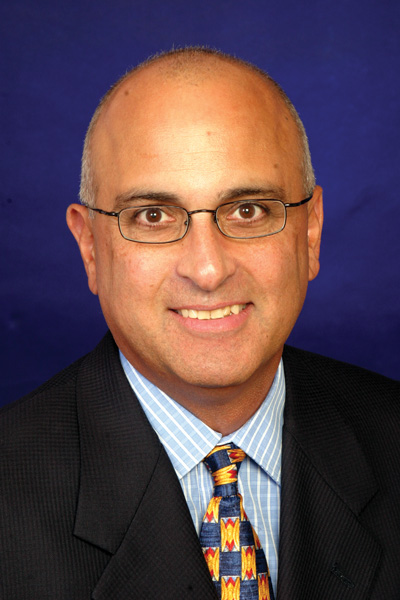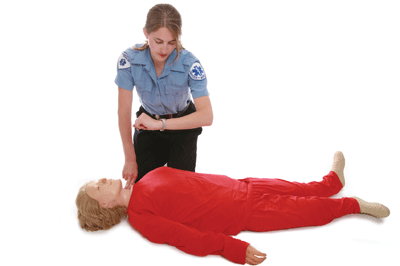I had a patient pass out during an exam. Could this have been a vasovagal response? What is the proper protocol when such a thing happens?

First, recognize the warning signs of a vasovagal response: excessive sweating, increased or decreased heart rate, a change in mentation, or the patient reports feeling lightheaded, tired, flushed, hot or having a funny taste in the mouth, says optometrist Andrew Gurwood, of The Eye Institute of the Pennsylvania College of Optometry. Dr. Gurwood is also a certified emergency medical technician and firefighter.
If the patient begins to faint, halt the exam. Many doctors are so focused on the procedure they are performing that they fail to notice when a patient is in the process of fainting, Dr. Gurwood says.
At the first sign of trouble, stop what youre doing and secure the patient from falling. The next step is to secure the patients airway, laying him flat on his back and placing his head into a neutral position, he says. A patient who is slumped over is not in the optimal position to breathe efficiently. Efficient breathing and good oxygenation help to counteract the effect of the vasovagal response. Bear in mind that syncopal episodes (fainting) are caused by reduced oxygen supply to the brain due to either poor breathing or reduced blood flow.
Dr. Gurwood offers this mnemonic: If the face is red, elevate the head. If the face is pale, elevate the tail. Patients who have fainted often have interrupted blood flow to the head, so their face will look pale. Increase the venous return of blood by elevating the legs (the tail) a few inches above the level of the chin.
Then, follow your ABCs:
Airway. As in cardiopulmonary resuscitation, use the head tilt, chin lift to gain a neutral head position and secure the airway.
Breathing. Once the airway is secure, use the look, listen and feel technique (again from CPR) to make sure the patient is breathing.
Circulation. Check the carotid artery for a pulse to ensure proper circulation. Usually, the pulse will be high (>90 bpm) as the blood pressure will be low. Press the skin of the patients fingers to check capillary refill, ensuring peripheral perfusion.
Dr. Gurwood doesnt recommend using smelling salts. The patient could jerk awake and bump against something, adding injury to insult. Loosen tight neckties or constricting clothing. Usually, once these measures are taken, a patient will arouse from a syncopal episode within a few seconds to a couple of minutes.
Triggers of the vasovagal response include fatigue, anxiety, pain, trauma, blood loss or prolonged, motionless standing. In the O.D.s office, tests such as gonioscopy, tonometry or foreign body removal can incite an oculocardiac response, which causes bradycardia and leads to fainting. Ive had patients faint from various procedures: contact lens insertion, punctal plug insertion, corneal foreign body removal, fluorescein angiography injection and even after YAG laser capsulotomy, says Leonid Skorin, Jr., O.D., D.O., of the Albert Lea Eye ClinicMayo Health System, Albert Lea, Minn. Before performing these kinds of tests, consider asking patients if they faint easily.
|
|
| Once the patient is lying down and the airway is open for proper breathing, check the patients pulse at the carotid artery to ensure proper circulation, as demonstrated by this emergency medical technician. |
The vasovagal response can also be triggered by psychogenic as well as metabolic causes. For a patient who is squeamish, any mental imageeven just the sight of a needlecould trigger the event, Dr. Gurwood says. So, if a patient seems squeamish or nervous, proceed with caution. Also, make sure to have someone in the exam lane to help you if the patient passes out.
In terms of metabolic etiologies, low blood sugar or hypoxia secondary to altitude sickness can also precipitate sensitivity. Many of my patients who have fainted admitted they had nothing to eat that day, Dr. Gurwood says.
How do you differentiate a vasovagal episode from a seizure? What kind of additional medical issues are involved?
There are several types of seizures. A petit mal seizure looks like the patient is daydreaming. The eyes are open, but the patient has a vacant stare. There is no loss of consciousness. Focal motor seizures frequently begin with limb twitching, and may progress to a tonic-clonic state. The grand mal seizure is marked by loss of consciousness and tonic-clonic spasm.
For immediate care, petit mal and focal-motor sufferers require arousal to awareness and a historical check for medical compliance. Consult family members who may be present (if not, have a staff member make a phone call) to rule out a history of seizures. For grand mal episodes, move aside objects that the patient could strike, secure the patient safely to the ground to avoid falling, and call emergency medical services (EMS).
Grand mal seizures require energy, making postictal hypoglycemia a possibility, Dr. Gurwood says. After the seizure, hypoglycemic management with oral supplements may be initiated by the EMT. In emergent situations, these can be dispensed so long as the patient is conscious and can swallow.
He adds, All unexplained episodes of syncope and all tonic clonic seizures should initiate a call to EMS to limit liability and to rule out the need for transport and additional care. The patient may have an additional seizure outside the office while operating a motor vehicle or away from the ability to get care, he says.
If the patient has revived and doesnt want to go to the hospital, the EMTs also have the proper paperwork for the patient to sign that says he or she is refusing care, Dr. Gurwood says.
After a vasovagal response, let the patient rest in a supine position for 15 to 30 minutes and then have him rise slowly, while supporting both arms, and escort him to his transportation. But do not allow him to drive, Dr. Skorin says. Following any unexplained episode, advise the patient to seek care from his general physician for complete diagnosis and understanding of his condition.


